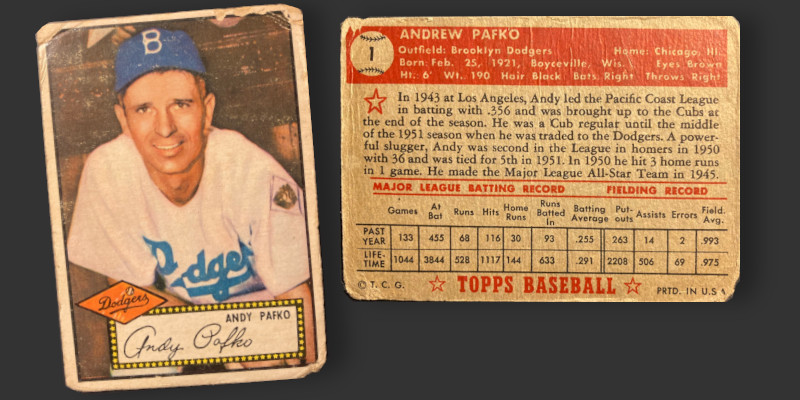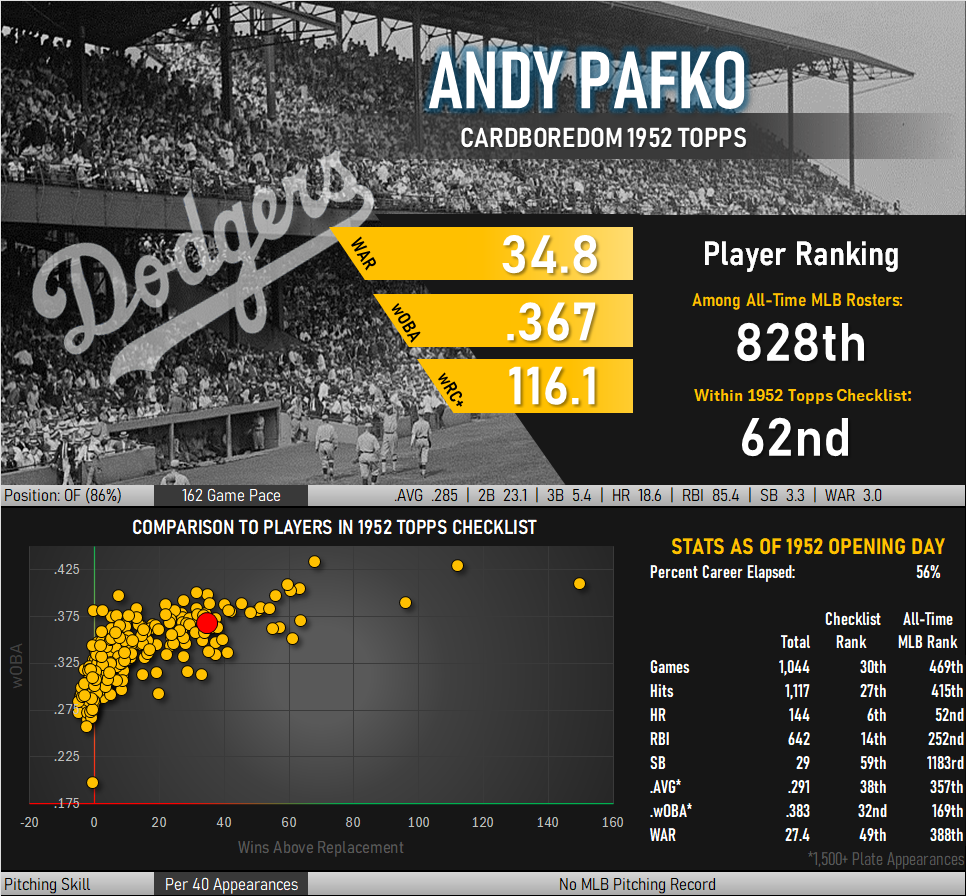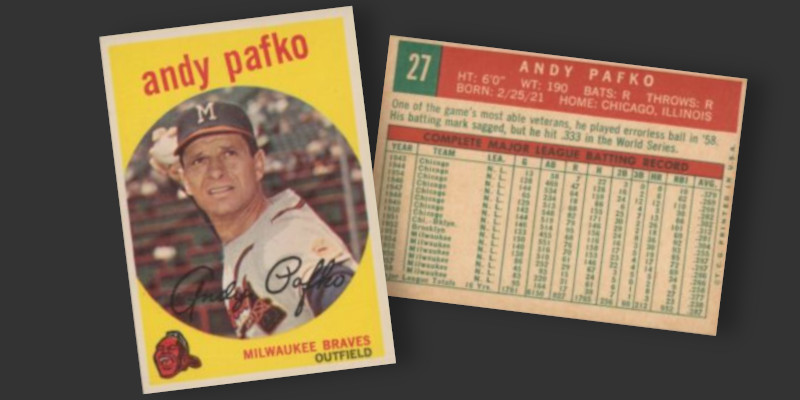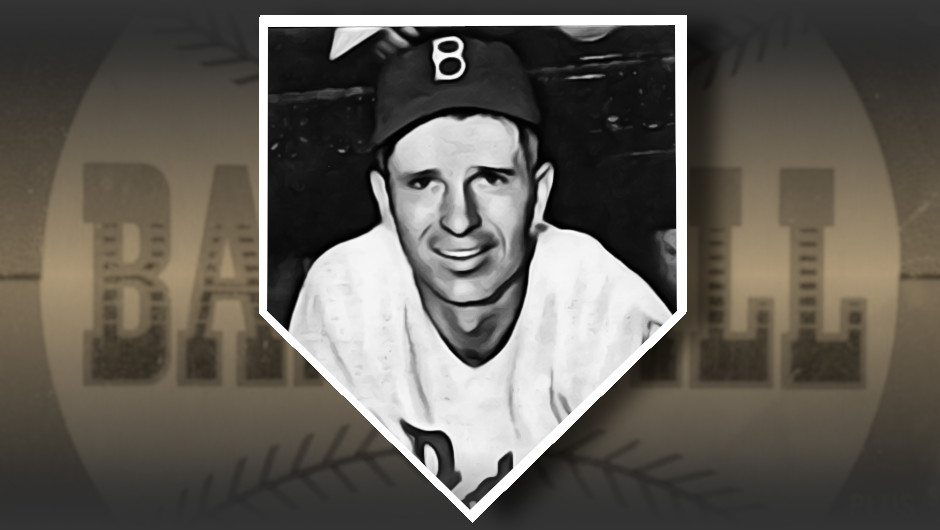Collectors building a complete set of 1952 Topps cards know there are a few roadblocks to achieving their goal: An astronomically expensive Mickey Mantle card; scare high-numbers; and the common card leading off the set that carries a irrational price tag. Card #1 shows a smiling Andy Pafko and is among the set’s easiest cards to find given its large print run. Its position as the leadoff card in the set subjected it to the brunt of wear accumulated by 1950s card collections as cards were often stored in numerical order. Placed at the top of the stack and wrapped in rubber bands, few survived to the present day in mint condition. PSA has graded 2,166 cards and found only one example to be in mint condition. The perfect Pafko commanded more than $81,000 when sold at auction in 2008. Nine other examples of the card exist in NM-MT condition and have likewise commanded a premium from high end collectors.
The Pafko Effect
Collectors paying a high price to acquire a condition-sensitive card is nothing new. However, what makes this card unique is the premium that all copies are ascribed no matter how beat up they are. I call this the “Pafko Effect” and use it to describe a scenario where an easily located card carries a significant premium solely due to high realized prices for examples with some sort of unique, value-creating quality. Simple economic theory easily predicts the premium price seen for ultra-scarce mint condition cards given the large demand for the set. Traditional theory breaks down a bit for the Pafko card when prices remain elevated for all other conditions despite the fact that these are just as plentiful as any other of the first 250 cards.
I suppose the rationale behind the Pafko Effect comes from shortcuts we make in our minds. Collectors see a bidding war erupt between deep-pocketed buyers for a unique (usually high-grade) card. The next time they see a lower grade example, they focus on the similarities of the cards rather than how much condition separates the expensive card from the rest. Internal framing of the card’s description can influence perception of the card. A buyer may view a creased Pafko as a “lightly damaged $80,000 card available at a discount” rather than a “low grade common with an asking price 5x that of similar cards.” The result is a tendency to open one’s own wallet wider for the less desirable card.

I admit to doing this. Like all others interested in the set I paid a premium to secure my Pafko card (shown above). Mine is solidly in poor condition and set me back between $50 and $100. This was actually the first purchase for my set, as I didn’t really feel serious about the project until considering how to approach the Pafko card.
What if Pafko was Card #100 instead of #1?
Pafko was a solid player, one whose performance outranks a majority of those depicted in the ’52 Topps set. His card gave birth to the Pafko Effect, engendering discussions of how much collectors “should” pay to complete their sets. I think a good way to quantify this would be to look at the market for similar players appearing in the first four series of the set. These cards all featured similar production numbers, giving them the same overall scarcity and setting them free from the premium placed on cards numbered 251-407.
Gus Bell, Johnny Pesky, and Eddie Stanky all share similar stats with Pafko. None command extra attention from collectors aside from a bit of appreciation of the fact they weren’t just transitory characters in the game. Each of these cards can be readily found for less than $10, a price point at which Pafko would likely have settled if not for being card #1.
The Player
Although considered a common card in most sets in which his cards appear, Pafko was a steady offensive force on competitive teams in the 1940s and 50s, playing in four World Series with three different teams. He almost added a fifth WS appearance with Brooklyn in 1951 but instead watched Bobby Thomson’s “Shot Heard ‘Round the World” fly over his head into the left field stands. He played multiple positions and was named to NL All-Star teams at several positions throughout his career. He averaged nearly 20 home runs per year and may have gotten closer to a lifetime 300 total if not for platooning in the outfield to make way for some guy named Hank Aaron.

One of the more interesting cards in Pafko’s career shows from this time as a Milwaukee Braves outfielder. What makes the card so interesting is the staged picture on the front. Pafko is seen ready to throw a recently caught ball, but his gaze is directed into the air above him. He looks as if he is having a flashback to Bobby Thomson’s 1951 home run flying overhead.








